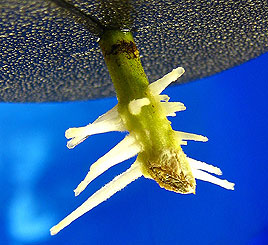
Cloning Plants: The Basics
Clippings:
When a branch of a plant is broken off, and an end of it is stuck in the ground, there are certain plants that will take that section and begin to grow roots in it, creating a new plant. Blackberries are a common plant where this happens, as their briars can pull pieces off when things try and walk through, and then it drops somewhere else to grow once again. Willow shrubs are another common plant known to be very easy to clone this way. This is one of the most common ways that gardeners clone plants, and you can try it with just about anything- just pull off a branch and put the end in some water and a chemical found at any nursery called root-tone. Once you see the little roots beginning to form, plant it and enjoy. This is an especially nice way to save money when you see a variety or plant that is too expensive for your budget. Just find a neighbor willing to give you a piece of theirs instead.
Runners:
Many plants will send sideways roots out called runners that will send up baby versions of themselves as well. Tomatoes and certain tree species like aspen are famous for this. Again, you can take these pieces, cut them off and plant them separately. However, if you do have these on plants you’re trying to grow, take them off, as they will make things less vigorous, and in the case of tomatoes, divert a lot less energy to production of your crop.
Grafting:
This is not a practice that plants do naturally, but plant breeders have been doing it for centuries. If you want to clone a tree, you can take a branch off the tree you like, and stick it in a notch above the bud of a different tree, right where that plant is sending all the right growth hormones. This is how apples, pears, cherries and other fruit trees are cloned, and any variety of these fruits cannot actually be grown by seed, but only by grafting branches from an established tree onto another tree. Growing things from the seeds of these plants will only roll the dice in the genetic lottery, and most of the time will create, at least in the form of apples, something that looks and tastes nothing like its mother. Though this seems more complicated, grafting can still be done by just about anyone who is careful. All you need is a clipping, a knife, a host tree, and some good plant tape.
Conclusion
As you can see, there are many different ways that plants clone themselves. This creates great opportunities for people who can’t or don’t want to afford the cost of established plants to still end up with a garden full of plants that will be as lovely as the ones you admired to begin with.





















 © 2017
© 2017
Recent Reviews